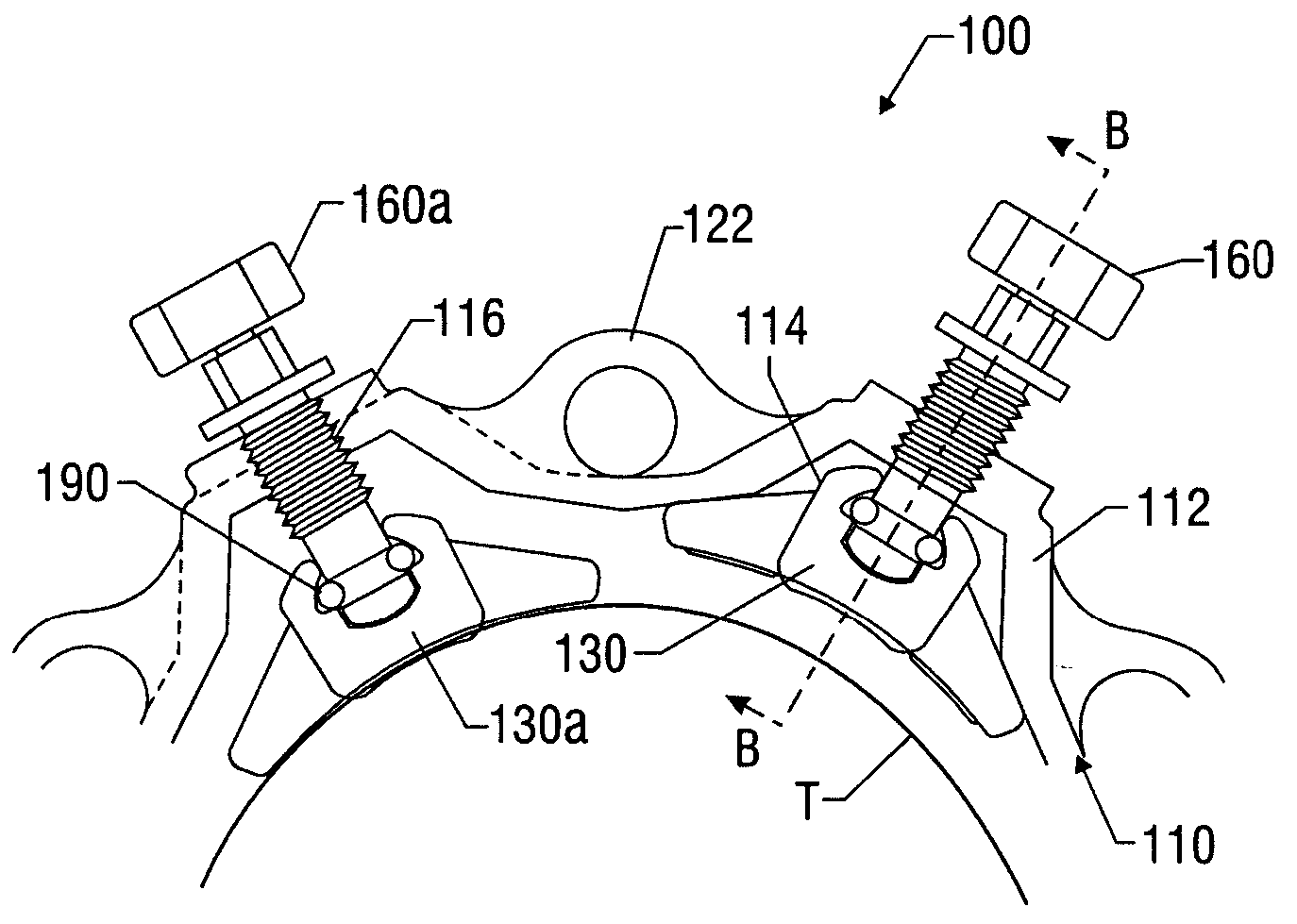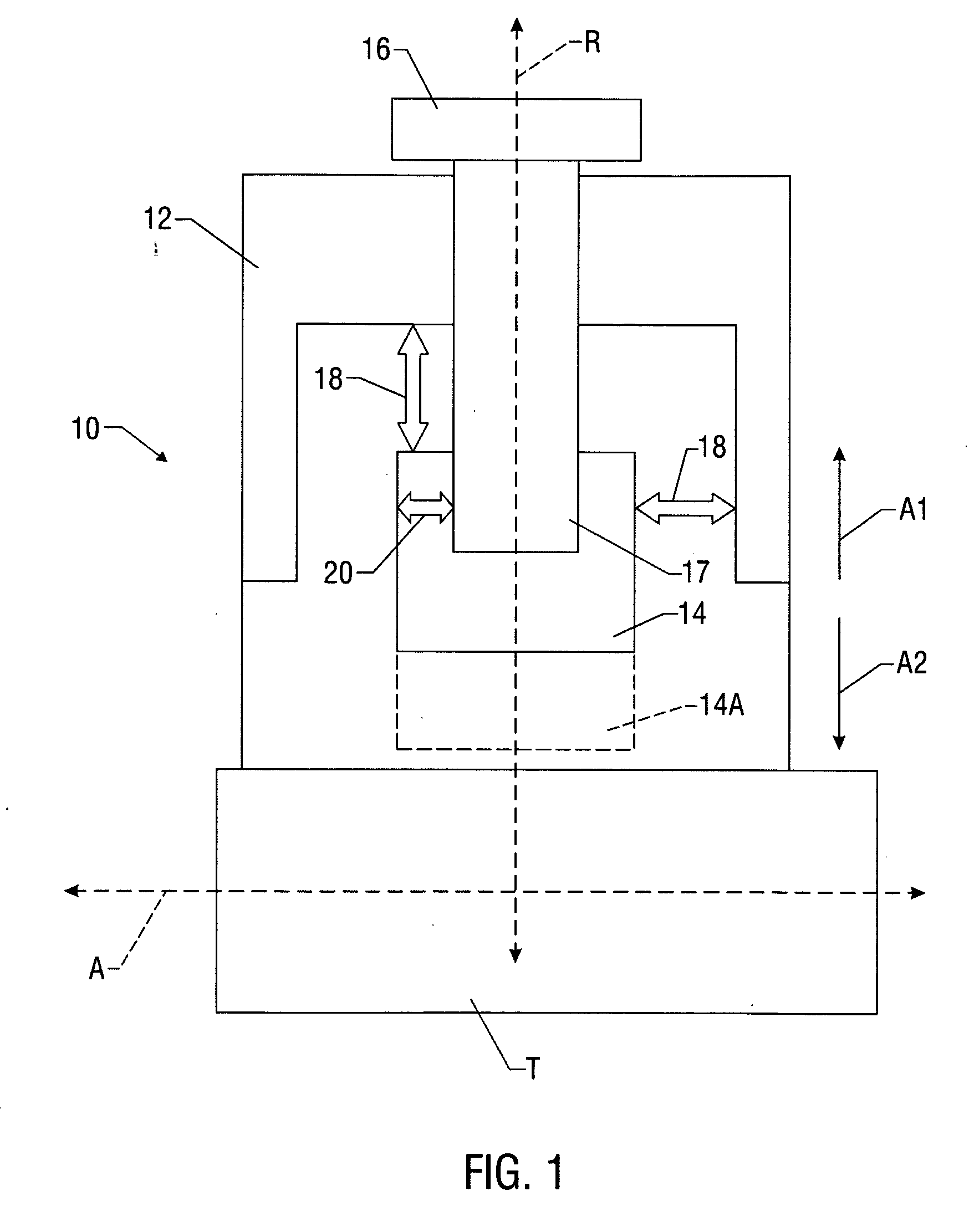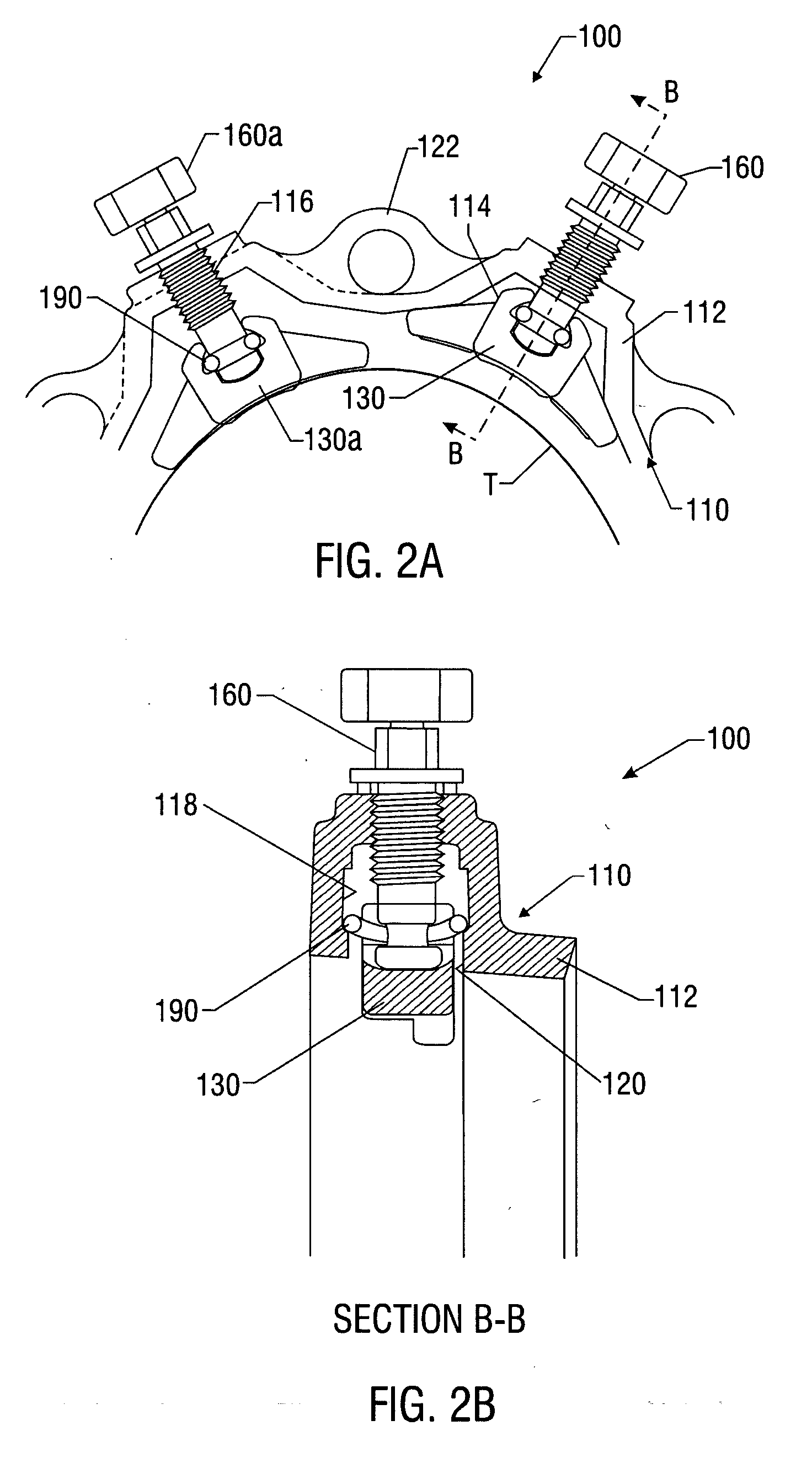Apparatus and method for joining tubulars
a tubular member and joint restraint technology, applied in the direction of packaging, manufacturing tools, couplings, etc., can solve the problems of inability to adapt to the material or geometry of tubular members, and other joint restraint arrangements are not readily adaptable to accommodate variations in tubular member material or geometry, so as to improve joint restraint reliability and stable clamping force
- Summary
- Abstract
- Description
- Claims
- Application Information
AI Technical Summary
Benefits of technology
Problems solved by technology
Method used
Image
Examples
Embodiment Construction
[0033] The present invention relates to devices and methods providing rugged and cost-effective joint restraint that provides an enhanced clamping force for joining tubular members. The present invention is susceptible to embodiments of different forms. There are shown in the drawings, and herein will be described in detail, specific embodiments of the present invention with the understanding that the present disclosure is to be considered an exemplification of the principles of the invention, and is not intended to limit the invention to that illustrated and described herein.
[0034] Referring initially to FIG. 1, there is schematically illustrated an exemplary coupling 10 made in accordance with the present invention. The coupling 10 is shown positioned about an end of a tubular member T. In the following description of the advantageous features of the coupling 10, the term “radial” movement denotes movement along axis R and “axial” movement denotes movement along axis A. Further, ...
PUM
 Login to View More
Login to View More Abstract
Description
Claims
Application Information
 Login to View More
Login to View More - R&D
- Intellectual Property
- Life Sciences
- Materials
- Tech Scout
- Unparalleled Data Quality
- Higher Quality Content
- 60% Fewer Hallucinations
Browse by: Latest US Patents, China's latest patents, Technical Efficacy Thesaurus, Application Domain, Technology Topic, Popular Technical Reports.
© 2025 PatSnap. All rights reserved.Legal|Privacy policy|Modern Slavery Act Transparency Statement|Sitemap|About US| Contact US: help@patsnap.com



